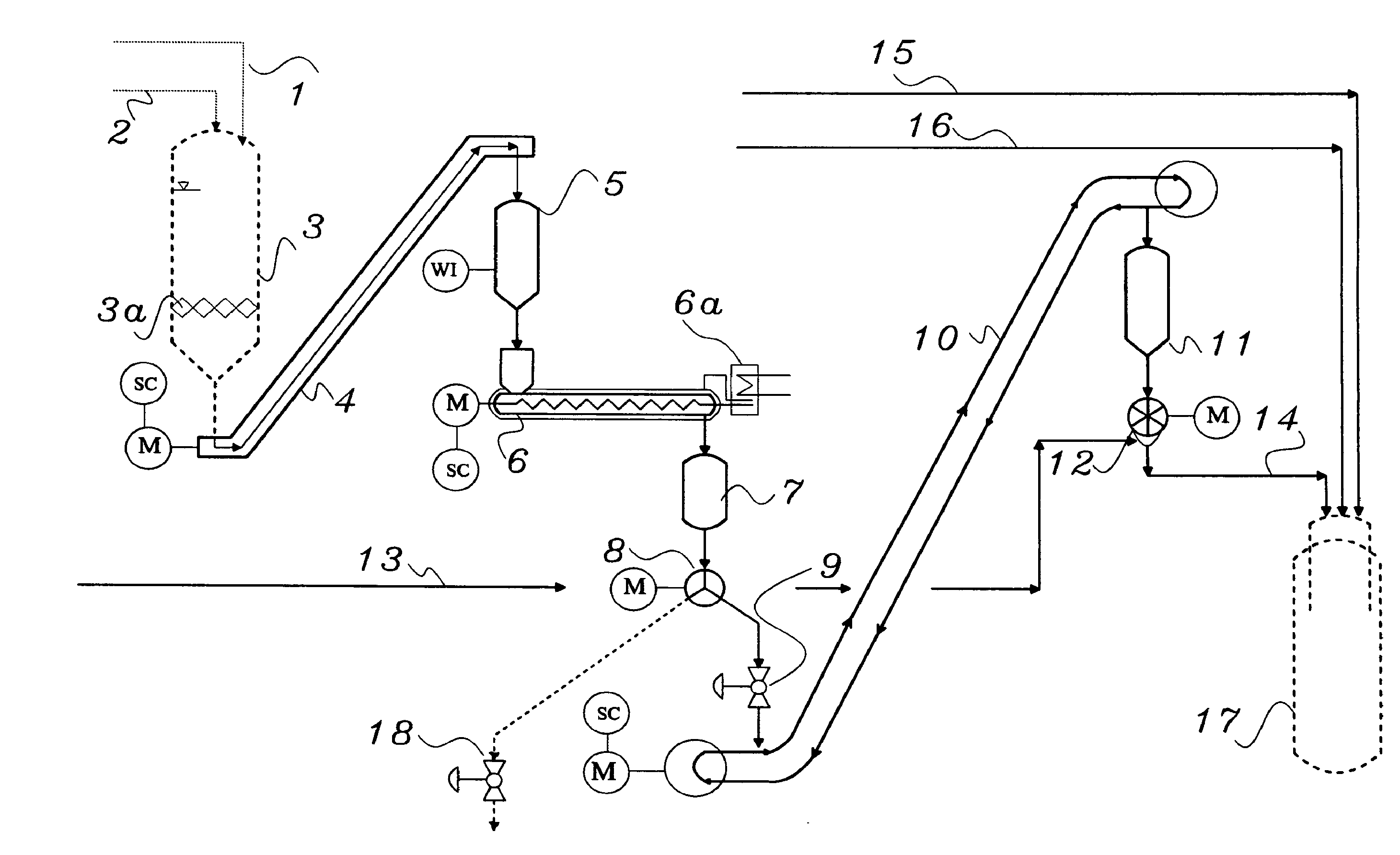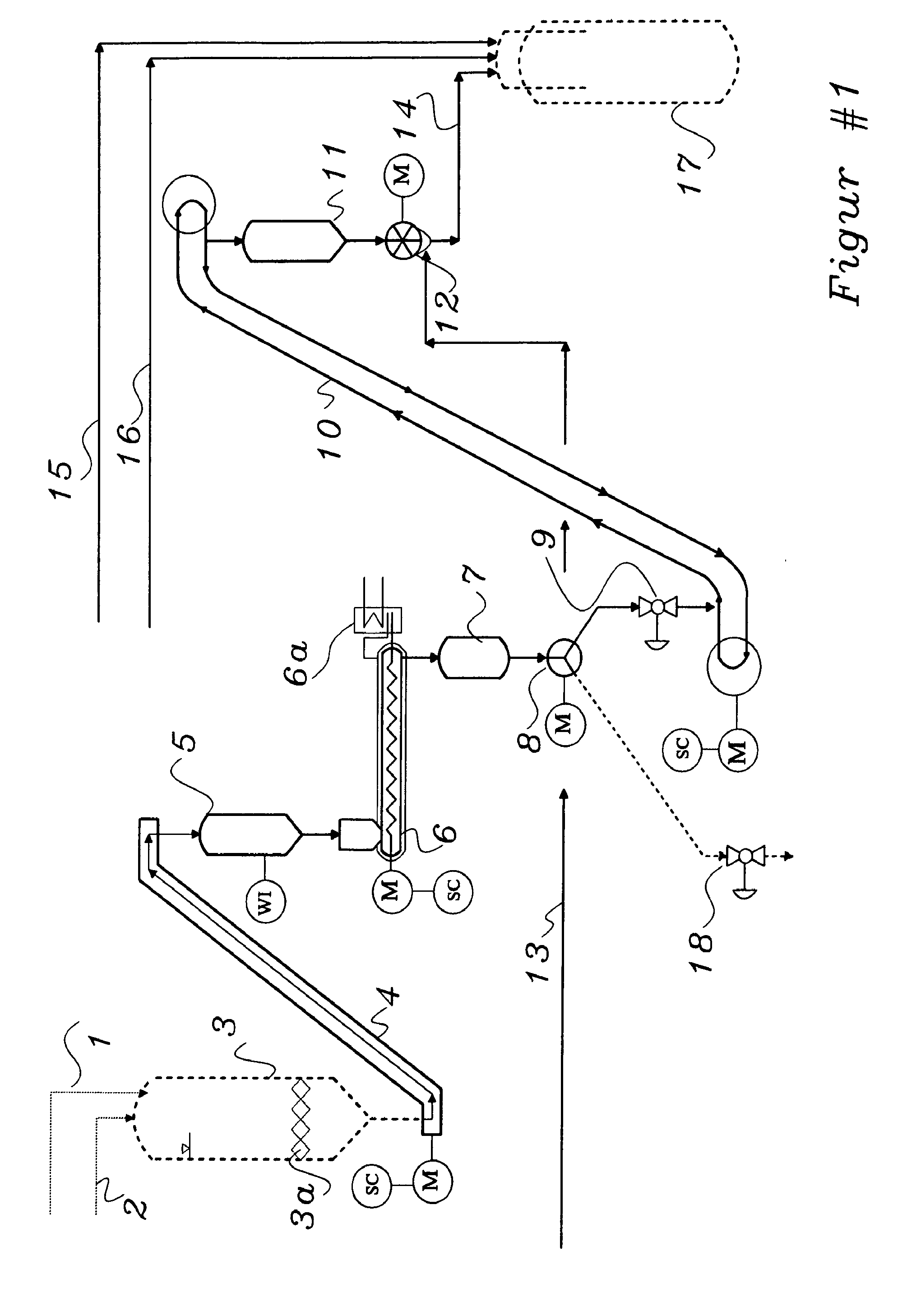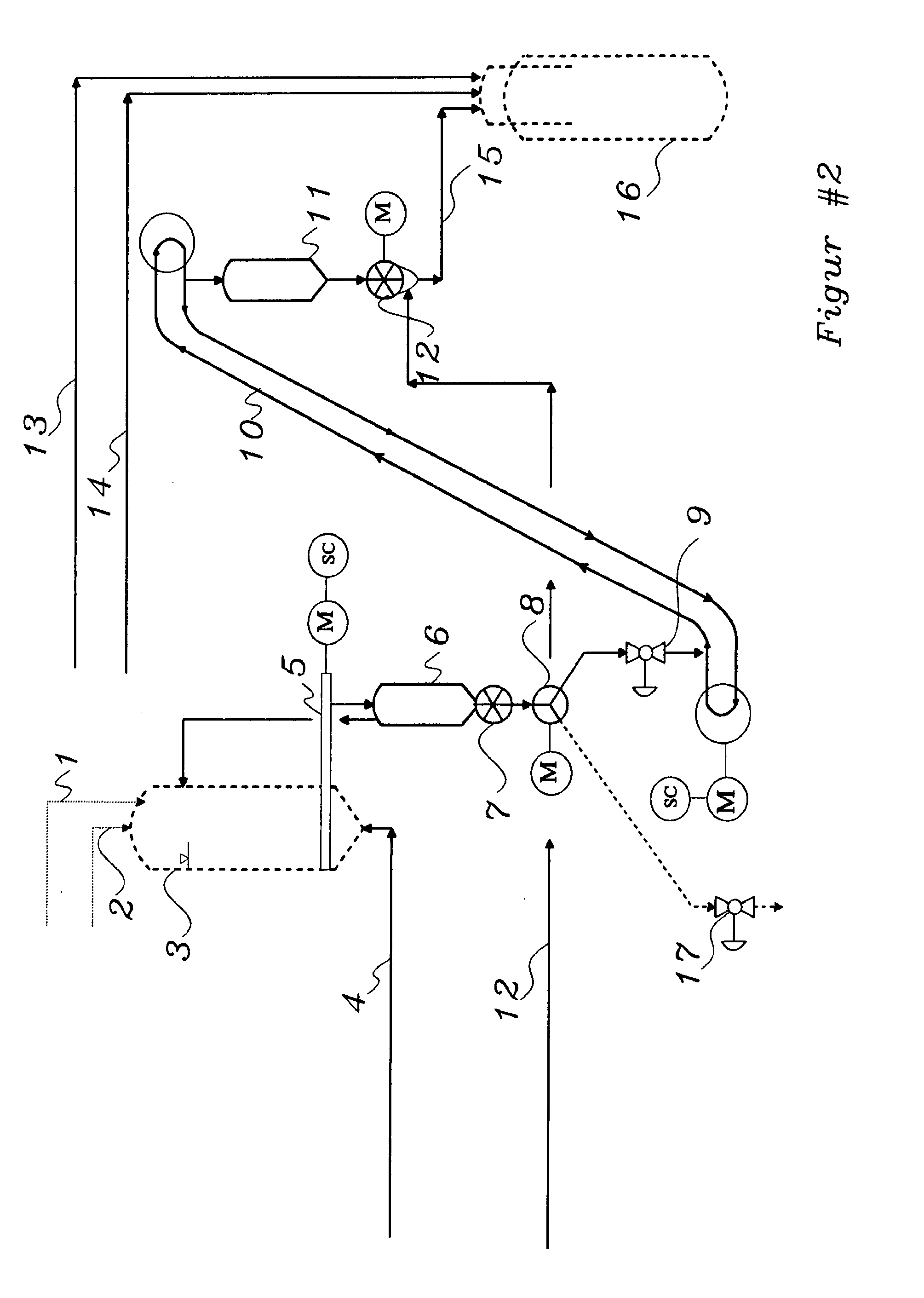Process for continuous dry conveying of carbonaceous materials subject to partial oxidization to a pressurized gasification reactor
- Summary
- Abstract
- Description
- Claims
- Application Information
AI Technical Summary
Benefits of technology
Problems solved by technology
Method used
Image
Examples
Embodiment Construction
with Optionally Respect to Redundancy
[0087]In light of start up of the plant feeding island as well the aforementioned redundancy, the FIG. 3 might illustrate the process inventively by following exemplary description.
[0088]The preparation and control of requisitions measure prior to ramp up the plant will be checked and permits the start up via IPCS. The system downstream of First Pressurized Vessel (or in case of operation without HP tubular drag conveyor, the Second Pressurized Vessel) is pressurized up to the operation pressure of feeding system, preferably with inert gas or any other appropriate gaseous media i.e. CO2, else. The slam shut valves / shut off valve 9, FIG. 1, 2 or 6f in FIG. 3 are set in CLOSED position. The availability of boundary system (i.e. minimal coal level in LP hopper, cushion gas pressure, lubrication sealing gas pressure, cooling circuit, etc.) releases the plant operability prior to start-up introduction. The isolation valve(s) between HP Discharge Vesse...
PUM
 Login to View More
Login to View More Abstract
Description
Claims
Application Information
 Login to View More
Login to View More - R&D
- Intellectual Property
- Life Sciences
- Materials
- Tech Scout
- Unparalleled Data Quality
- Higher Quality Content
- 60% Fewer Hallucinations
Browse by: Latest US Patents, China's latest patents, Technical Efficacy Thesaurus, Application Domain, Technology Topic, Popular Technical Reports.
© 2025 PatSnap. All rights reserved.Legal|Privacy policy|Modern Slavery Act Transparency Statement|Sitemap|About US| Contact US: help@patsnap.com



